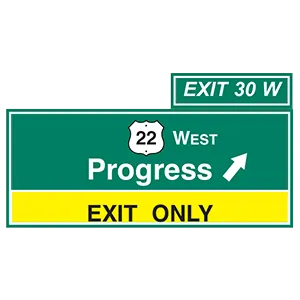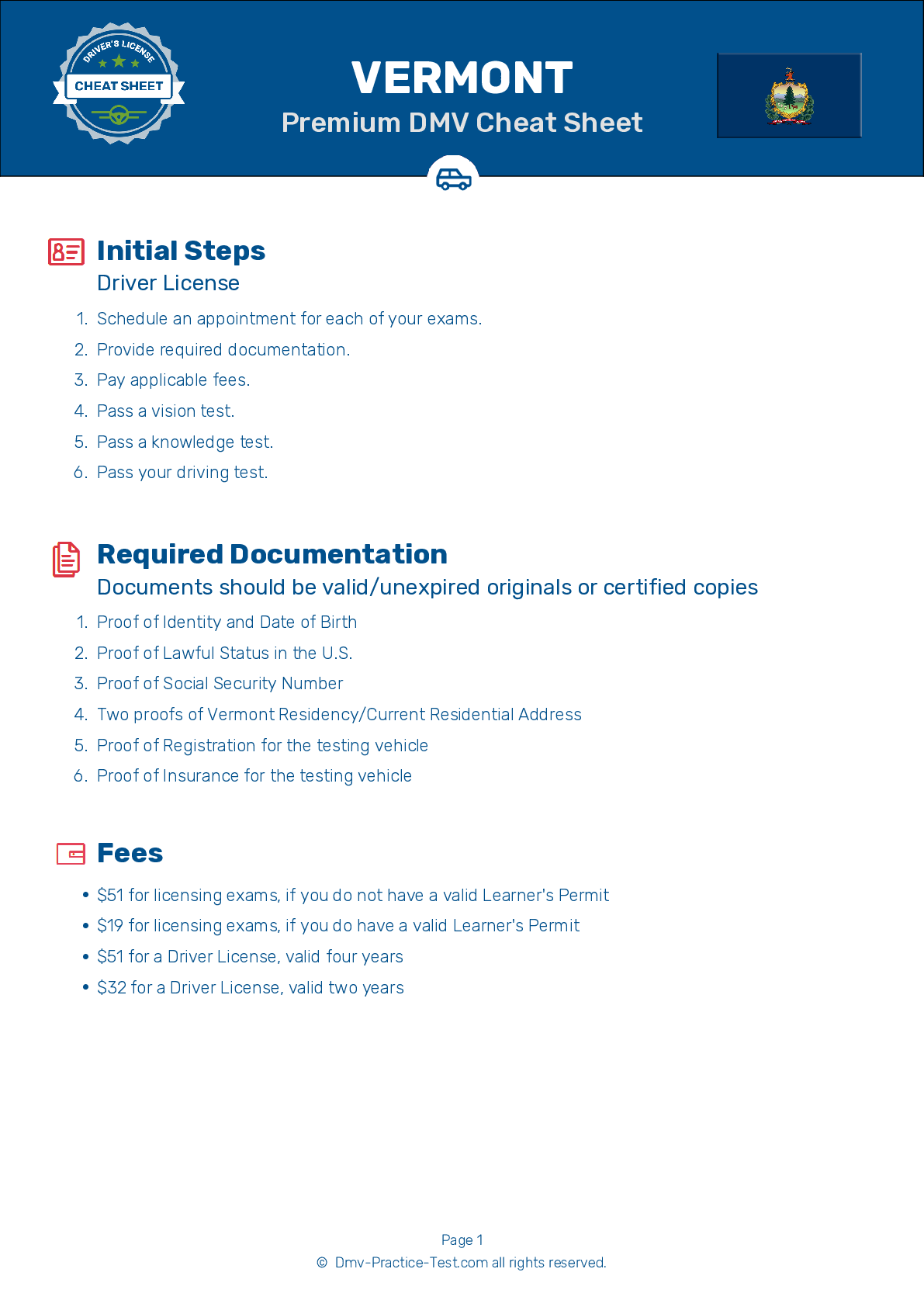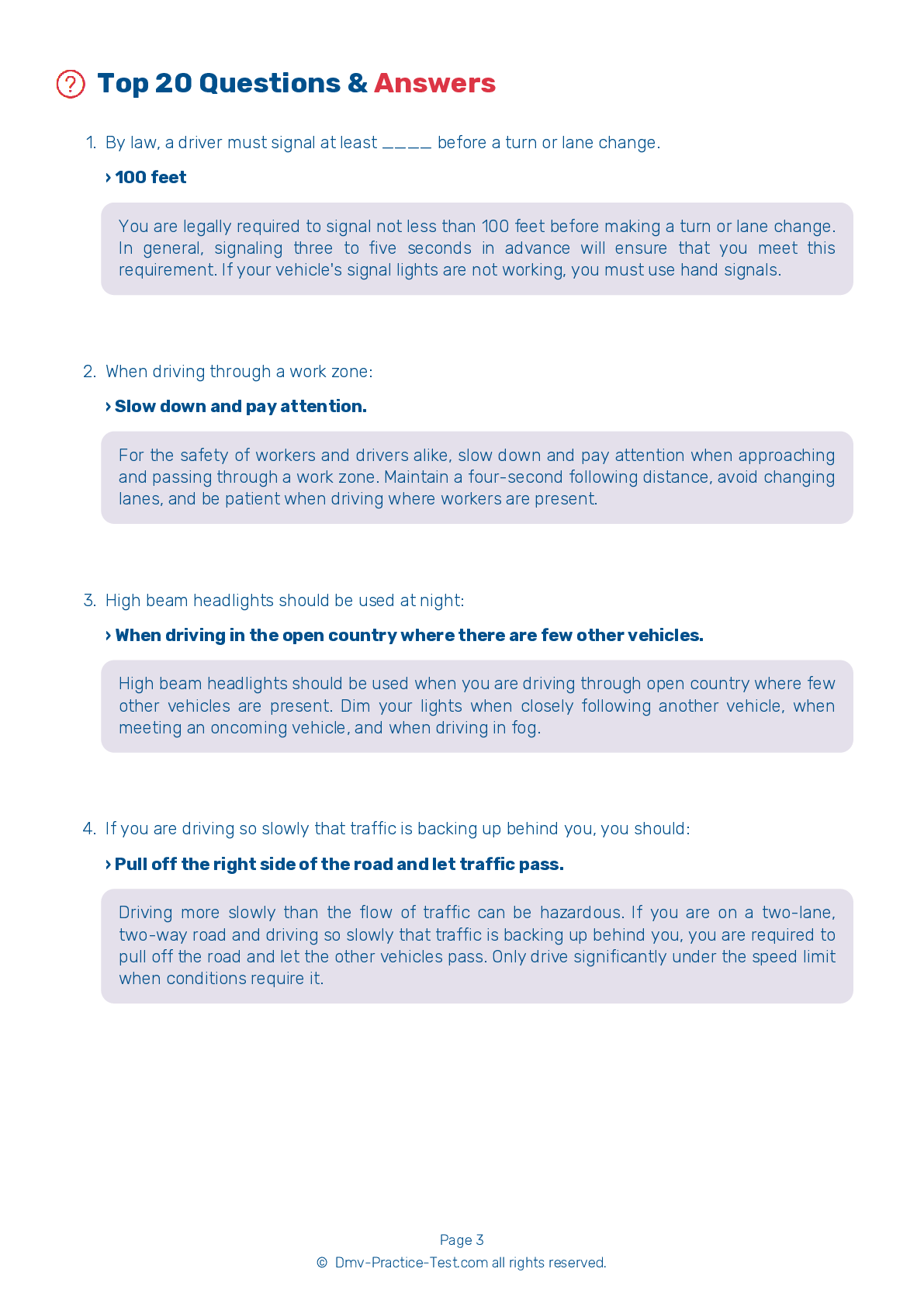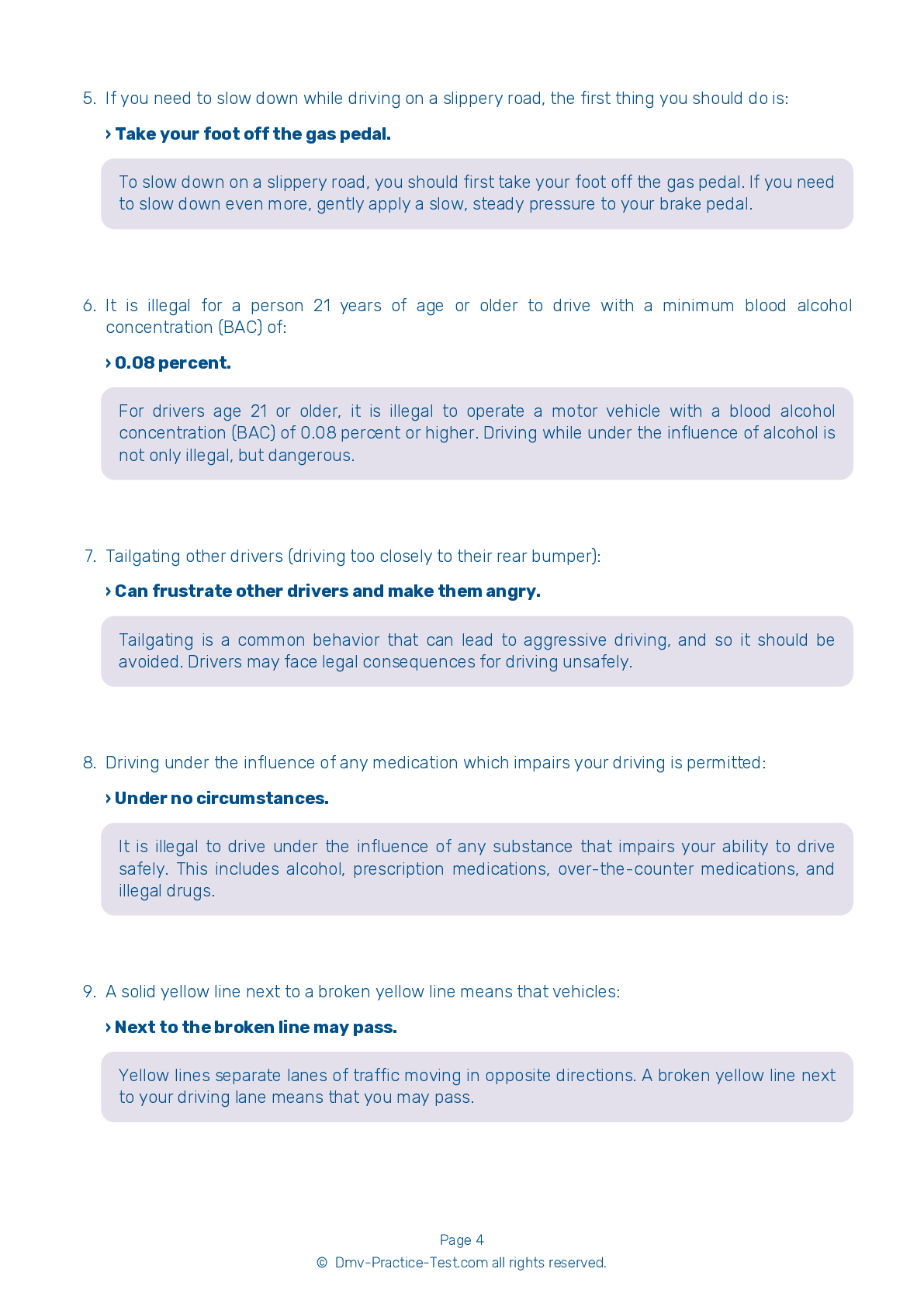FREE Vermont DMV Practice Test #2 Page 2 of 3
The Vermont DMV practise examinations have been updated for January 2025. It includes questions based on the Vermont Driver Handbook's most significant traffic signals and legislation for 2025. Use actual questions that are very similar (often identical!) to the DMV driving permit test and driver's licence exam to study for the DMV driving permit test and driver's licence exam.
On the practise exam, each question gets a tip and explanation to help you remember the concepts. The written component of the official Vermont DMV test will include questions about traffic rules, traffic signs, and driving statutes, as well as knowledge from the Driver Handbook.
To obtain a passing grade, you must correctly answer 16 of the 20 questions. Use the practise exam provided by the Vermont Department of Motor Vehicles to help you prepare for your instruction permit or driver's licence.
The DMV exam is available in several languages.
Using any kind of testing assistance will result in an automatic fail, and the DMV may take additional action against your driver's licence, so stay away from it.
7 . If you are driving so slowly that traffic is backing up behind you, you should:
Driving more slowly than the flow of traffic can be hazardous. If you are on a two-lane, two-way road and driving so slowly that traffic is backing up behind you, you are required to pull off the road and let the other vehicles pass. Only drive significantly under the speed limit when conditions require it.
8 . If you see this sign above your lane, you:

If a yellow panel with the message "Exit only" is on a highway sign, the lane below the sign will not continue through the interchange. Instead, the lane will go off of the roadway to form a ramp. If you are in a lane directly under an "Exit only" sign, you may change lanes to move through the interchange or you must exit the highway.
9 . When preparing to turn left, drivers should:
As you approach a left turn, signal your intentions three to five seconds in advance. Continually check your rearview mirror as you gradually slow down. On a multilane road, move into the left lane before reaching the intersection where you plan to turn. Yield to traffic and pedestrians and turn when your path is clear.
10 . You are driving at night and another vehicle is approaching from the opposite direction. Your headlights:
Do not use your high beam headlights when approaching or following another vehicle at night. Switch to the low beam setting to ensure the safety of everyone on the road.
11 . Certain highway signs contain information about hazardous conditions. Such signs are known as:
Warning signs advise drivers of potentially hazardous conditions. For your own safety, obey warning signs. Disregarding the information provided by a warning sign may result in an accident due to your negligence.
12 . When approaching a flashing yellow light, drivers should:
A flashing yellow light warns of a hazard. Slow down and proceed with caution.
13 . When driving through a work zone:
For the safety of workers and drivers alike, slow down and pay attention when approaching and passing through a work zone. Maintain a four-second following distance, avoid changing lanes, and be patient when driving where workers are present.
2025 Vermont | Frequently Asked Questions
1. Not checking mirrors and blind spots before changing lanes or turning.
2. Speeding or driving too slowly for the conditions or posted speed limit.
3. Not coming to a complete stop at stop signs or red lights.
4. Incorrect signalling or not signalling at all.
5. Poor parking, especially parallel parking.
Remember, practice makes perfect, so take time to hone your skills.



